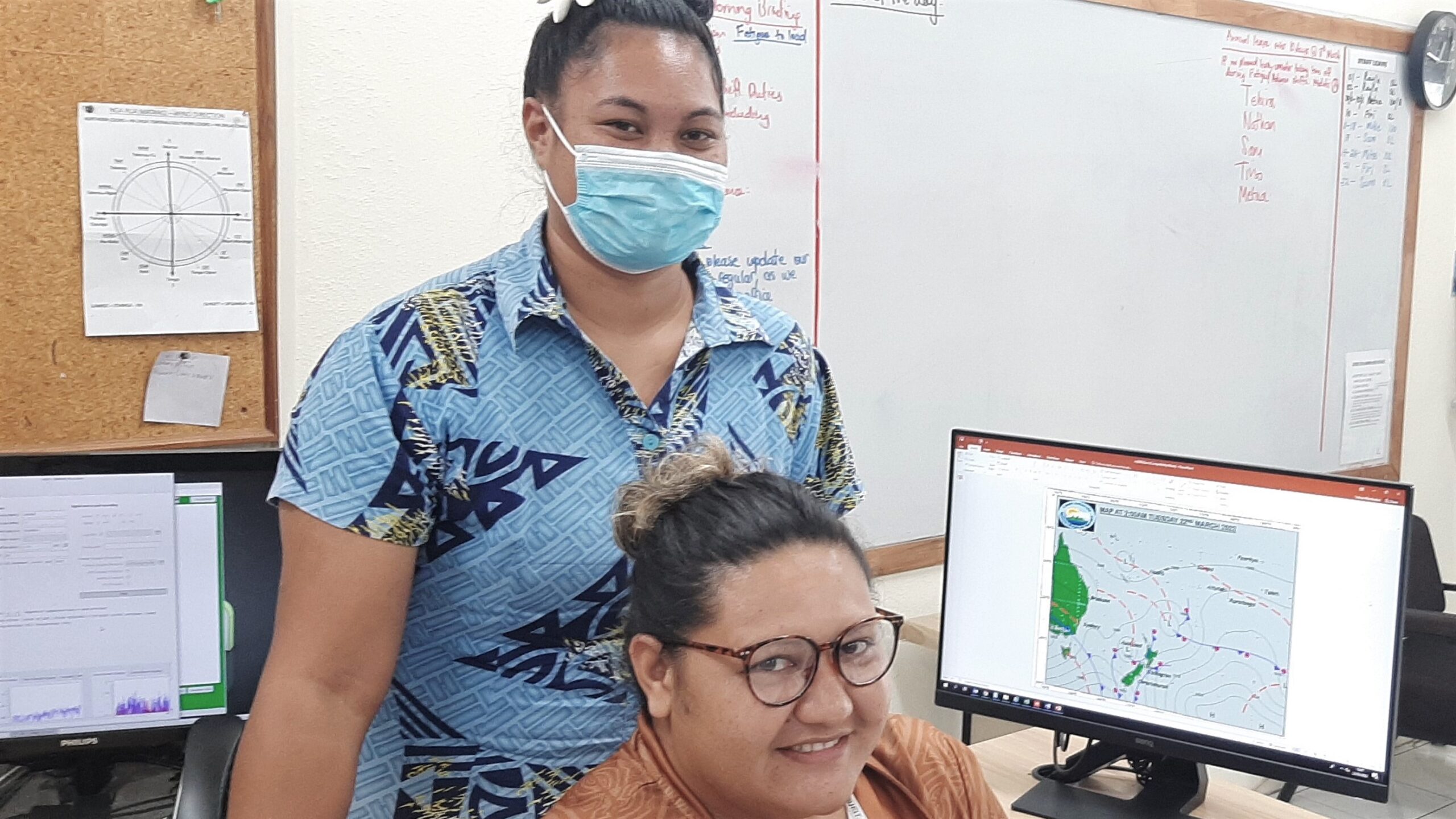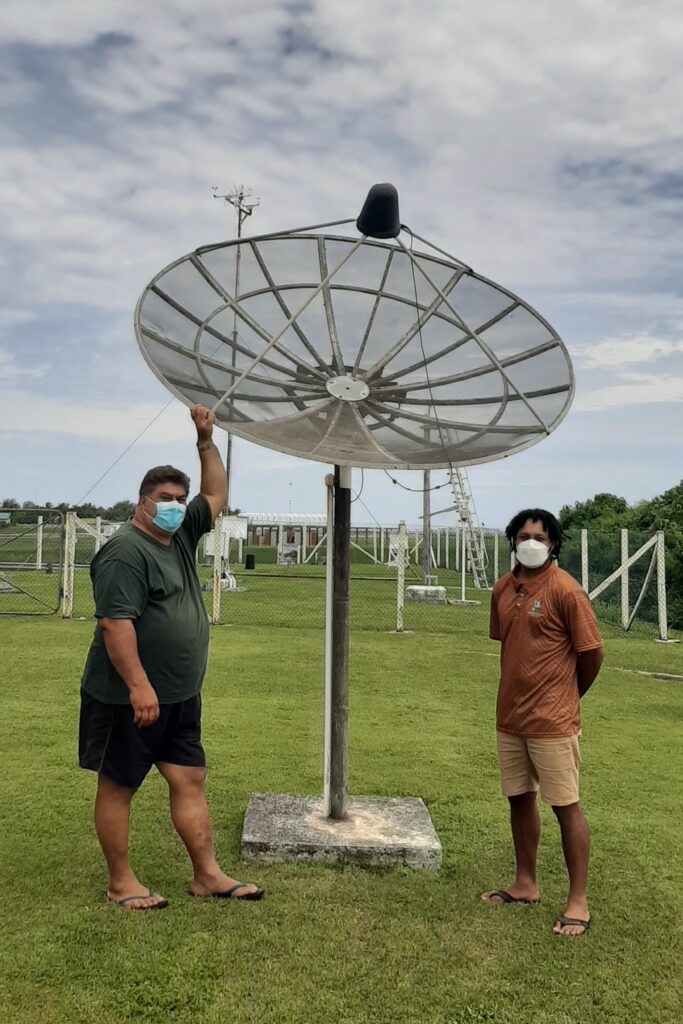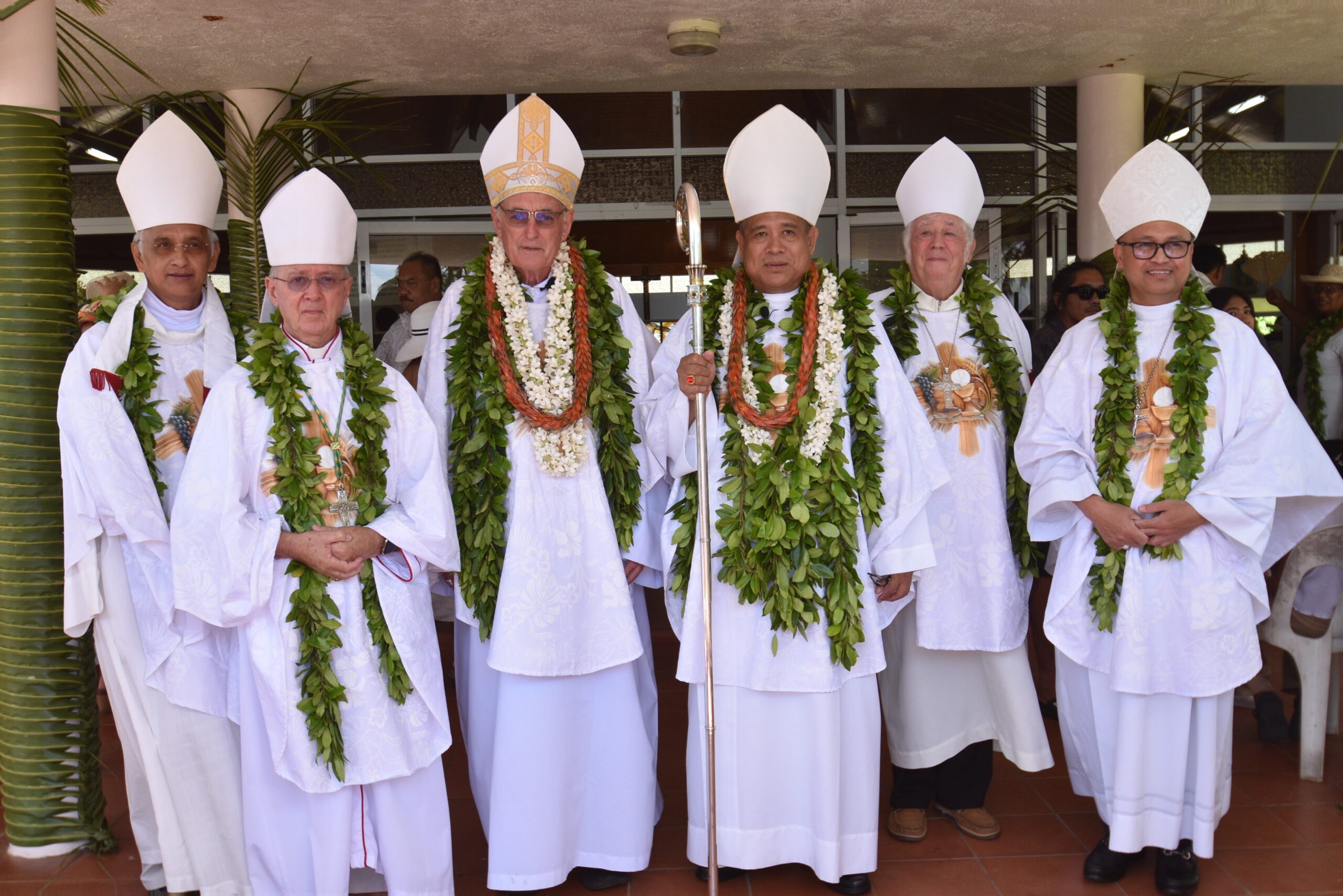Climate Change negative trend expected to continue
Wednesday 23 March 2022 | Written by Melina Etches | Published in Environment, National

Cook Islands Meteorological Service staff Rayla Pokino (standing) and Tehira Winchester. SUPPLIED/22032204
In 2021 the World Meteorological Organisation (WMO) published a report on disaster statistics for the past 50 years which showed that there were more than 11,000 disasters linked to weather, climate and water-related hazards, almost equal to one disaster per day; there were 2 million deaths – or 115 per day.
Today March 23 marks World Meteorological Organisation (WMO) Day, and the theme of this year is Early Warning and Early Action.
The Cook Islands Meteorological Service will commemorate the date with an open office day to the public from 9am to 2pm, with limited numbers and precautions at any one time as required by Te Marae Ora policies - masks must be worn when visiting and social distancing will be heeded.
Director of the Cook Islands Meteorological Service, Arona Ngari says, videos have been produced that will be aired on local television to assist communities in helping the Meteorological Service in monitoring the atmosphere and ensuring that tools and equipment put out for monitoring are not mis-used or abused.
The Secretary-General of WMO, Peter Taalas in a statement noted that the number of disasters has increased five-fold in the past 50 years, and the economic costs has soared.
But the good news is that the number of casualties has fallen dramatically, we are better than ever before at saving lives.
Supercomputers, satellites and advances in science have greatly increased the accuracy of our forecasts.
Mobile phone alerts and weather apps can reach even remote areas.
The top priority of WMO is to protect lives and livelihoods from weather, climate and water extremes.
Every minute of every day of the year.

The theme celebrates the achievements of national meteorological and hydrological services in improved early warning systems and also highlights the vital work of the disaster risk reduction community in making sure that these early warnings lead to early action.
But we cannot be complacent. We face many challenges, especially in making sure that early warnings reach the last mile to the most vulnerable who need them most.
Climate change is already very visible through more extreme weather in all parts of the world. We are seeing more intense heatwaves and drought and forest fires. We have more water vapor in the atmosphere, which leads to extreme rainfall and deadly flooding. The warming of the ocean fuels more powerful tropical storms and rising sea levels increase the impacts.
And this negative trend is expected to continue.
Only half of the 193 Members of WMO have multi-hazard early warning systems in place, and there is also a major need to enhance the impact based forecasting skills of a large fraction of Members.
There are severe gaps in weather and hydrological observing networks in Africa, some parts of Latin America and in Pacific and Caribbean islands - this undermines forecasts local and globally…
WMO’s vision is that “by 2030, we see a world where all nations, especially the most vulnerable, are more resilient to the socioeconomic consequences of extreme weather, climate, water and other environmental events.
Early warnings work. They must work for everyone. They must lead to early action.









































